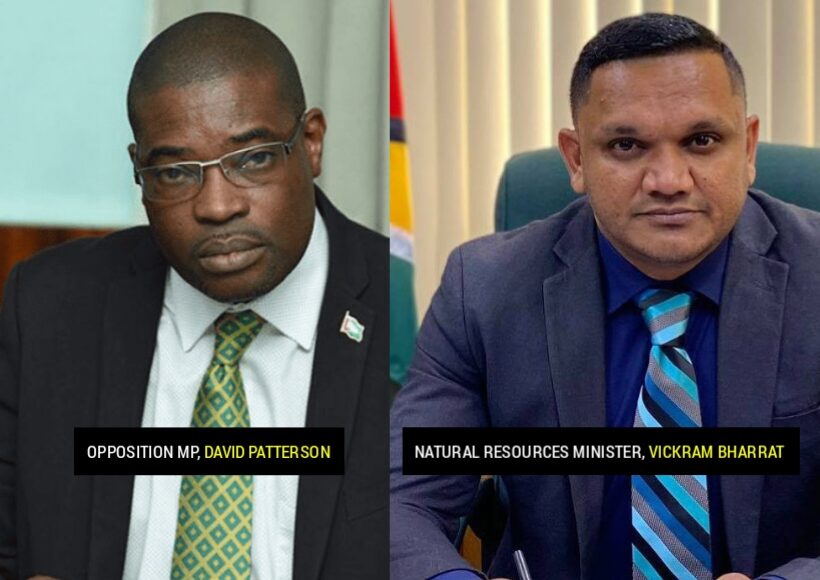Minister of Natural Resources, Vickram Bharrat recently debunked a number of statements proffered by Opposition Parliamentarian, David Patterson regarding the safe operating limits for Guyana’s three oil producing vessels.
In a series of questions submitted to the National Assembly for written reply, Patterson falsely claimed that the safe operating limits, as per the environmental permit for the Liza Destiny vessel is 120,000 barrels of oil per day (bpd) while for Liza Unity and Prosperity, it stands at 220,000 bpd.
Patterson said these vessels are all producing above these numbers. As of February 2025, he said Liza Destiny was producing 160,000 bpd, Liza Unity 250,000 bpd and Prosperity 230,000 bpd. In light of this, Patterson asked Minister Bharrat to provide the National Assembly with technical documents that justify the increases.
In a detailed response, Minister Bharrat categorically noted that the Environmental Permits for the respective vessels requires the Permit Holder to not only adhere to the conditions therein, but also the operating parameters and environmental limits specified in the Environmental and Social Impact Assessment (ESIA).
Minister Bharrat said it is the ESIA which addresses the maximum expected production rates and applicable impact assessments which form the basis of the issued Environmental Permits. That said, Minister Bharrat highlighted that it was under the previous administration that the Liza Phase One ESIA was approved for a maximum production rate of 144,000 barrels per day for the Liza Destiny floating, production, storage and offloading (FPSO) vessel. This has since been further bolstered by additional studies required by the EPA to assess the impacts of higher production at Destiny.
Minister Bharrat also noted that it was the APNU+AFC regime of which Patterson was involved that approved the Liza Phase 2 ESIA with a maximum production rate of 300,000 barrels per day for the Liza Unity FPSO.
With the foregoing in mind, the minister said, “It is surprising that inaccurate statements can be boldly declared (by Patterson). Even more so, when the ESIAs and their respective Environmental Permits were not only subject to public consultation but also published online.”
Under the PPP/C administration, Minister Bharrat clarified that the Payara ESIA was approved for a maximum production rate of 264,000 barrels per day for the Prosperity FPSO. “These facilities are clearly still operating within their approved production rates,” the minister said.
Minister Bharrat was also keen to note that production optimisation is a standard practice globally, executed across many production fields after a facility has been commissioned. While approvals of Field Development Plans (FDP) cater for the Licence Holder’s best estimate of expected production, he stressed that the FPSOs are designed to accommodate higher production levels. He said this is done to cater for the level of uncertainty which naturally exists around reservoir models, adding that it explains the higher production levels considered in the ESIA.
Additionally, Minister Bharrat stressed that production optimisation and the resulting increased production levels are not done casually, as implied by Patterson. This process, the minister said, is closely monitored by ExxonMobil Guyana as well as the Ministry of Natural Resource, the Guyana Geology and Mines Commission, and EPA until the approved production level is achieved, and the reservoir and facility performance are stabilized.
He said this process includes constant engagements and the provision of additional information by EMGL as required by the regulatory agencies.
If during the optimization tests it is found that components of the processing facility need to be upgraded to cater for higher production levels, Minister Bharrat said this is also done under the supervision of regulatory agencies.
“It must be underscored that approvals and permits would not be issued if our assessments found that the operation pushes any piece of equipment on the FPSO above its operating limits,” said the official. In fact, he said his ministry has even secured external support to assist the Government’s team in conducting reviews.
Overall, Minister Bharrat assured that production optimization, once done safely and efficiently, brings benefits for all stakeholders, Government included.











